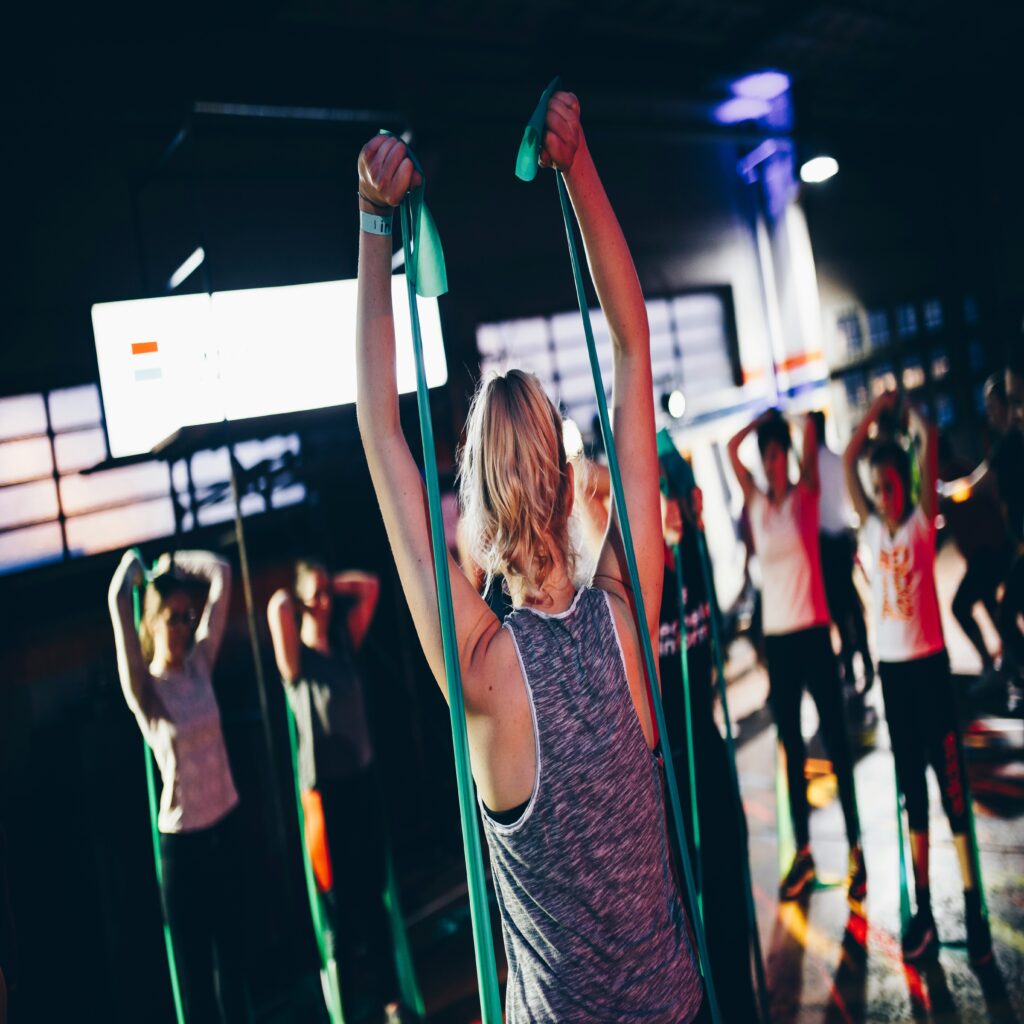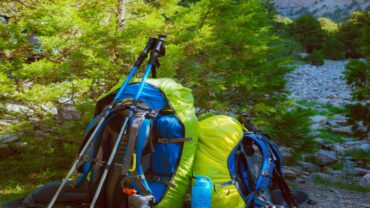Nepal, home to the world’s highest peaks and breathtaking landscapes, offers a unique opportunity for fitness enthusiasts to combine adventure with physical activity. Trekking in Nepal is not only a chance to immerse oneself in nature’s grandeur but also a remarkable journey towards improved fitness and well-being. In this detailed guide, we’ll explore how trekking in Nepal can be a transformative experience, offering a plethora of physical and mental health benefits.
The Fitness Benefits of Trekking:
Trekking in Nepal presents an excellent opportunity to engage in a comprehensive full-body workout while exploring the majestic Himalayas. Here’s a detailed look at the fitness benefits of trekking:
- Cardiovascular Health: Trekking involves sustained aerobic activity, which is excellent for cardiovascular health. The varying altitudes and terrain in Nepal keep the heart rate elevated, promoting improved circulation and heart health.
- Trekking involves sustained aerobic activity, which is excellent for cardiovascular health. The continuous movement of walking, especially uphill climbs, increases heart rate and improves circulation.
- The varying altitudes and terrain in Nepal provide a diverse cardiovascular workout. As trekkers ascend to higher elevations, the thinner air requires the heart to work harder to supply oxygen to the muscles.
- Regular trekking sessions help strengthen the heart muscle, lower blood pressure, and reduce the risk of heart disease and stroke over time.
- Strength Building: Uphill climbs, descents, and navigating uneven terrain engage various muscle groups throughout the body. The lower body muscles, including the quadriceps, calves, and glutes, are particularly strengthened during ascents, while trekking poles aid in upper body engagement and core stability.
- Uphill climbs, descents, and navigating uneven terrain engage various muscle groups throughout the body.
- Lower body muscles, including the quadriceps, hamstrings, calves, and glutes, are particularly strengthened during ascents. The repetitive motion of lifting and propelling the body uphill builds muscle endurance and power.
- Trekking poles, when used correctly, engage the muscles of the arms, shoulders, and upper back, providing an additional strength-building component.
- Core muscles are engaged to maintain stability and balance on uneven surfaces, contributing to overall strength development.
- Endurance Enhancement: Trekking requires stamina to cover long distances over multiple days. As trekkers gradually acclimate to the altitude and continue their journey, their endurance levels increase, allowing them to tackle longer and more challenging routes.
- Trekking requires stamina to cover long distances over multiple days, making it an excellent way to improve endurance.
- As trekkers gradually acclimate to the altitude and continue their journey, their bodies become more efficient at utilizing oxygen, allowing them to sustain physical activity for longer periods.
- Endurance gains from trekking can translate to improved performance in other physical activities and sports, as well as enhanced stamina for everyday tasks.
- Flexibility and Balance: Negotiating rocky trails and uneven terrain enhances flexibility and balance. The constant adjustments required to maintain stability on the trail engage stabilizing muscles and improve proprioception, reducing the risk of injuries.
- Negotiating rocky trails, river crossings, and uneven terrain challenges the body’s flexibility and balance.
- The constant adjustments required to maintain stability on the trail engage stabilizing muscles throughout the body, including the core, hips, and ankles.
- Stretching exercises incorporated into pre and post-trek routines help improve flexibility, reducing the risk of injuries and enhancing overall mobility.
- Improved balance not only prevents falls and accidents on the trail but also carries over to daily activities, reducing the risk of trips and slips.
- Mental Well-being: Beyond the physical benefits, trekking in Nepal offers significant mental health benefits. The serene beauty of the Himalayas, coupled with the sense of accomplishment from conquering challenging trails, reduces stress, boosts mood, and enhances overall well-being.
- Trekking in Nepal offers significant mental health benefits, thanks to the serene beauty of the Himalayas and the sense of accomplishment from conquering challenging trails.
- Spending time in nature has been shown to reduce stress, anxiety, and symptoms of depression, promoting overall psychological well-being.
- The meditative aspects of trekking, such as focusing on the rhythm of breathing and the sights and sounds of the natural environment, promote mindfulness and relaxation.
- The sense of achievement and self-efficacy gained from completing a trek boosts confidence and resilience, improving overall mental resilience and coping skills.

Preparing for a Trek in Nepal:
Proper preparation is essential for a safe and enjoyable trekking experience in Nepal. Here’s a detailed guide on how to prepare:
- Physical Conditioning: Start a fitness regimen several months before your trek, focusing on cardiovascular exercises, strength training, and hiking. Gradually increase the intensity and duration of your workouts to prepare your body for the demands of trekking.
- Altitude Acclimatization: Many trekking routes in Nepal involve high altitudes, where the air is thin. Proper acclimatization is crucial to avoid altitude sickness. Plan your itinerary with sufficient rest days and ascend gradually to allow your body to adjust to the altitude.
- Altitude acclimatization is crucial when trekking in Nepal, as many routes involve significant changes in elevation.
- Acute Mountain Sickness (AMS) can occur when ascending to high altitudes too quickly, resulting in symptoms such as headaches, nausea, fatigue, and dizziness.
- Proper acclimatization involves ascending gradually, allowing the body time to adjust to the decreased oxygen levels at higher elevations.
- Trekking itineraries should include rest days at intermediate altitudes to aid acclimatization, as well as provisions for descending if symptoms of AMS develop.
- Hydration, adequate rest, and avoiding alcohol and strenuous activity during the acclimatization process can help minimize the risk of altitude-related illnesses.
- Gear and Equipment: Invest in high-quality trekking gear, including sturdy hiking boots, moisture-wicking clothing, a durable backpack, trekking poles, and essential safety equipment such as a first-aid kit, water purification tablets, and a headlamp.
- Choosing the right gear and equipment is essential for a safe and comfortable trekking experience in Nepal.
- High-quality hiking boots with good ankle support and a sturdy sole are crucial for navigating varied terrain and preventing foot injuries.
- Moisture-wicking clothing made from breathable materials helps regulate body temperature and manage sweat, keeping you dry and comfortable.
- A durable backpack with proper weight distribution and adjustable straps is essential for carrying essentials such as water, snacks, clothing layers, and safety gear.
- Trekking poles provide stability on uneven terrain, reduce strain on the knees during descents, and aid in maintaining balance, especially on steep slopes.
- Essential safety equipment includes a first-aid kit with basic medical supplies, water purification tablets or a filtration system, a headlamp or flashlight, and a map and compass or GPS device for navigation.
- Hydration and Nutrition: Stay hydrated by drinking plenty of water throughout the trek. Pack lightweight, nutrient-rich snacks such as nuts, dried fruits, and energy bars to fuel your body during long days on the trail. Enjoy hearty meals at teahouses or campsites along the way, focusing on a balanced diet rich in carbohydrates, proteins, and healthy fats.
- Proper hydration and nutrition are critical for maintaining energy levels and performance during trekking in Nepal.
- Trekking at high altitudes and in varying climates increases the risk of dehydration, so it’s essential to drink plenty of water throughout the day.
- Carrying a reusable water bottle or hydration bladder and refilling it at designated water sources or with purified water from teahouses or campsites is essential.
- Pack lightweight, nutrient-rich snacks such as nuts, dried fruits, energy bars, and trail mix to fuel your body during long days on the trail.
- Enjoying hearty meals at teahouses or campsites provides essential carbohydrates, proteins, and fats to replenish energy stores and support muscle recovery.
- Pay attention to portion sizes and eat balanced meals that include a variety of foods to ensure you’re getting the necessary nutrients for sustained physical activity.
Trekking Routes in Nepal:
Nepal offers a wide range of trekking routes catering to all fitness levels and preferences. Here are some popular options:
- Everest Base Camp Trek: Embark on an iconic journey to the base camp of the world’s highest peak, Mount Everest. This challenging trek takes you through the picturesque Khumbu region, where you’ll encounter Sherpa villages, monasteries, and breathtaking mountain views.
- Duration: Typically takes around 12-14 days round trip from Lukla to Everest Base Camp and back.
- Highlights: Offers stunning views of the world’s highest peak, Mount Everest, as well as other iconic Himalayan peaks like Lhotse, Nuptse, and Ama Dablam.
- Route: The trek begins with a flight from Kathmandu to Lukla, followed by a trek through the picturesque Sherpa villages of Namche Bazaar, Tengboche, Dingboche, and Gorak Shep.
- Attractions: Along the way, trekkers can visit Buddhist monasteries, experience Sherpa culture, and marvel at breathtaking landscapes, including the Khumbu Glacier and Khumbu Icefall.
- Difficulty: Considered a moderate to strenuous trek, with challenging terrain, high altitudes, and potential altitude sickness. Proper acclimatization and physical fitness are essential.
- Annapurna Circuit: Circumnavigate the Annapurna massif on this classic trek, passing through diverse landscapes ranging from lush forests to arid valleys. Along the way, you’ll traverse high mountain passes, visit traditional Gurung and Thakali villages, and soak in panoramic views of snow-capped peaks.
- Duration: Typically takes around 15-20 days to complete the full circuit, but shorter variations are possible.
- Highlights: Offers a diverse range of landscapes, from lush subtropical forests to high-altitude desert terrain, and stunning views of Annapurna massif, including Annapurna I (8,091m) and Dhaulagiri (8,167m).
- Route: The trek starts from the town of Besisahar and follows the Marsyangdi River valley through charming villages like Chamje, Manang, and Pisang. It crosses the Thorong La Pass (5,416m) before descending into the Kali Gandaki Valley.
- Attractions: Highlights include natural hot springs in Tatopani, the sacred Hindu temple of Muktinath, and the deepest gorge in the world, Kali Gandaki Gorge.
- Difficulty: Varies depending on the specific route and altitude gain. The Thorong La Pass crossing can be challenging, and proper acclimatization is essential.
- Langtang Valley Trek: Explore the pristine beauty of the Langtang region on this shorter trek. Trek through dense rhododendron forests, past picturesque villages, and along glacier-fed rivers. Enjoy stunning views of the Langtang Himalayas, including Langtang Lirung and Ganesh Himal.
- Duration: Typically takes around 7-10 days round trip from Kathmandu.
- Highlights: Offers breathtaking views of snow-capped peaks, including Langtang Lirung (7,234m) and Ganesh Himal (7,422m), as well as lush forests, alpine meadows, and glacial lakes.
- Route: The trek begins with a drive from Kathmandu to Syabrubesi, followed by a trek through the Langtang National Park, passing through picturesque villages like Lama Hotel, Langtang Village, and Kyanjin Gompa.
- Attractions: Highlights include the scenic Langtang Valley, sacred monasteries, and the opportunity to spot local wildlife such as red pandas, Himalayan thars, and various bird species.
- Difficulty: Considered a moderate trek, with some steep ascents and descents. The altitude is lower compared to Everest Base Camp and Annapurna Circuit, making it more accessible for trekkers with less experience at high altitudes.
Conclusion:
Trekking in Nepal is a multifaceted adventure that offers not only unparalleled natural beauty but also significant fitness and health benefits. By challenging yourself amidst the breathtaking landscapes of the Himalayas, you’ll improve your physical fitness, mental well-being, and overall quality of life. So lace up your boots, pack your backpack, and embark on an unforgettable trekking journey in Nepal – where every step brings you closer to nature and closer to your fitness goals.
These treks offer unique experiences, stunning scenery, and opportunities to immerse yourself in the rich cultural heritage of Nepal’s mountain communities. Regardless of which trek you choose, proper preparation, including physical conditioning, acclimatization, and gear selection, is crucial for a safe and enjoyable experience.
Please Follow Us For more Updates :
Website : Base Camp Trip




Comment (0)